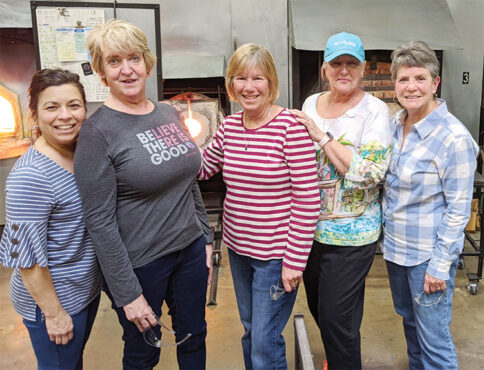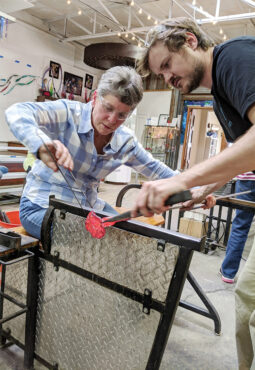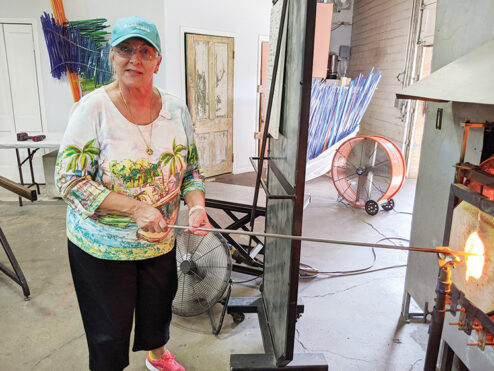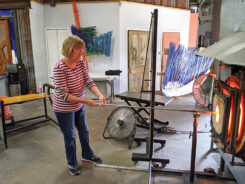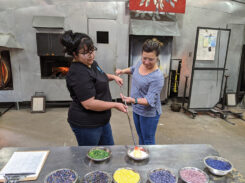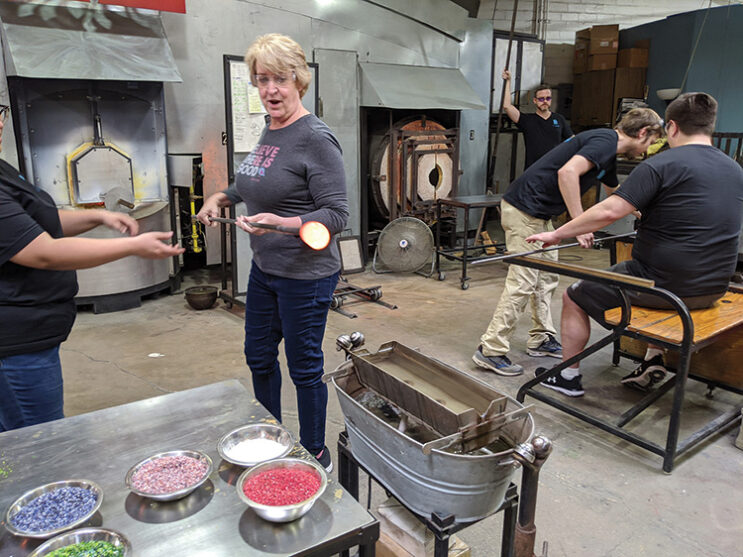Vicki Baker
The practice of blowing glass seems hip and modern if you’ve recently visited an exhibition by Dale Chihuly, but the technique has been all the rage since the Roman Empire. While new technologies introduced more modern equipment, the fundamentals of glassblowing have evolved little since then.
Setting out to tackle this ancient art form, in early February, Girls on Wheels enrolled in a class at Dallas Art Glass Studio. Designed with the novice in mind, we worked with demonstration artists guiding us through the necessary steps to making our own blown glass creations.
The studio was filled with lots of hot stuff, and we dressed for the heat in breathable cotton clothing. Open furnaces are kept at searing heat over days-long periods to stay hot enough to melt raw glass. Once heated to over 2,000°F, the glass glowed an eerie, sunset orange.
The first step was choosing our colors from among the dozens of options of glass chips to stripe or speckle our pieces. Taking an embarrassingly long period of hemming and hawing, we each decided on our “color mix” (not to mention the mental agony faced choosing between making a flower or vase!)
Our pieces began by reaching inside the furnace filled with melted glass and gathering a layer of molten glass on the end of a steel pipe. Next, we added color by dipping and rolling the hot glob into the colored chips. Then, back to the furnace, where the colored glass was seared into the clear.
In addition to several trips back and forth to the furnace to keep the glass above 1,000°F, we kept the molten glass in motion by constantly turning the pipe. If held too still, greedy gravity snagged it, and the glass got too droopy. Once heated sufficiently, we rolled the colored molten glass on a steel table, giving it a cylindrical shape. Again, constantly rotating the pipe as the glass thickened to the consistency of taffy as it began to cool.
Satisfied with the shape, we sat and rested the pipe on the steel arms of a bench. With one hand we turned the pipe; with the other we used various tools such as jacks, tweezers, and wooden paddles to further shape our piece requiring perfect coordination between both hands.
The final step was removing the glass from the pipe. Using steel tweezers and a firm tap directly against the pipe, the scorching hot piece separated and dropped into the Kevlar gloved hands of our instructor. The pieces were quickly placed in an annealing oven to slowly cool down to prevent cracking or breaking and available for pick-up several days later.
Glass blowing required extreme patience, tenacity, and dexterity. Girls on Wheels delighted in its magic, learning to transform raw glass into a piece of art. My glass flower now sits on my counter. It’s not the only decoration I have, but it’s become my favorite. After all, it was among girlfriends that a lasting memory was crafted.

